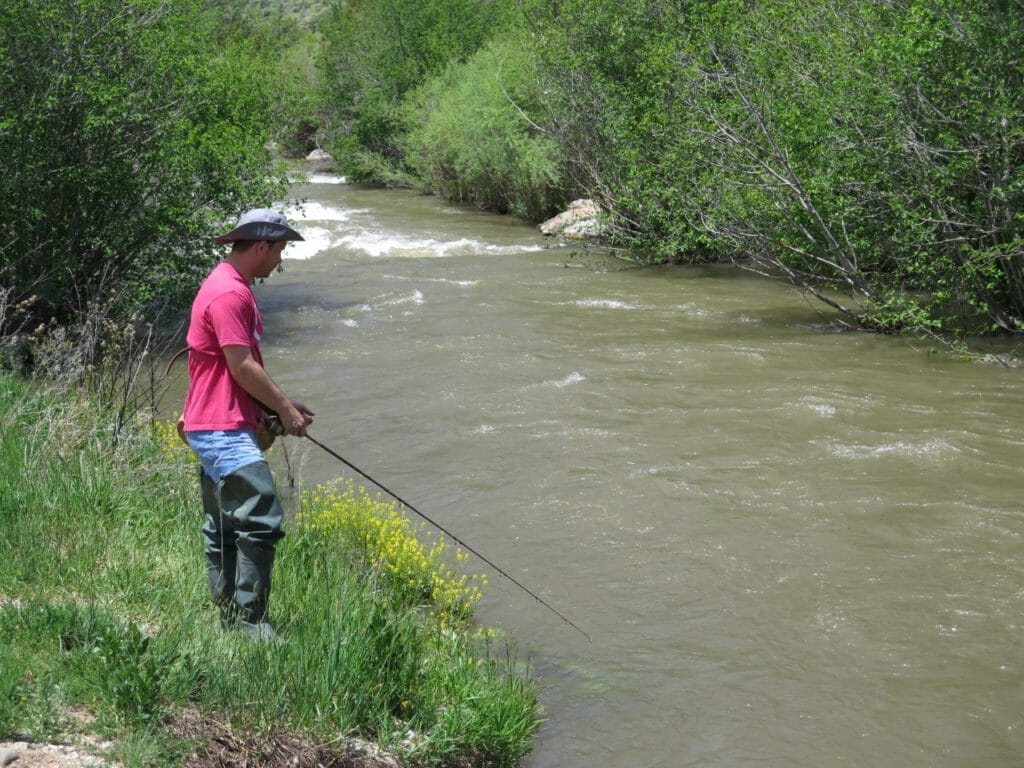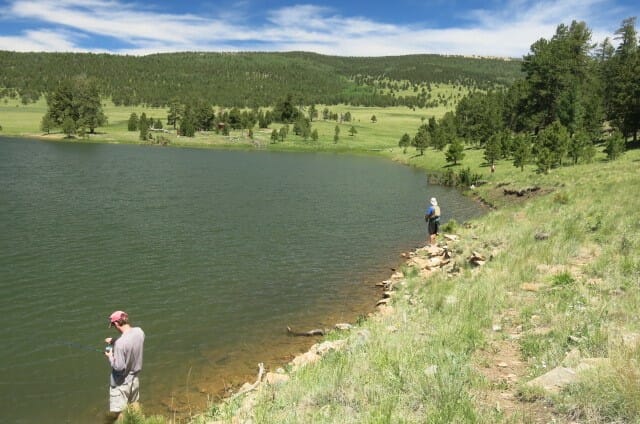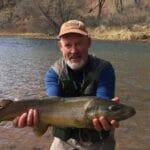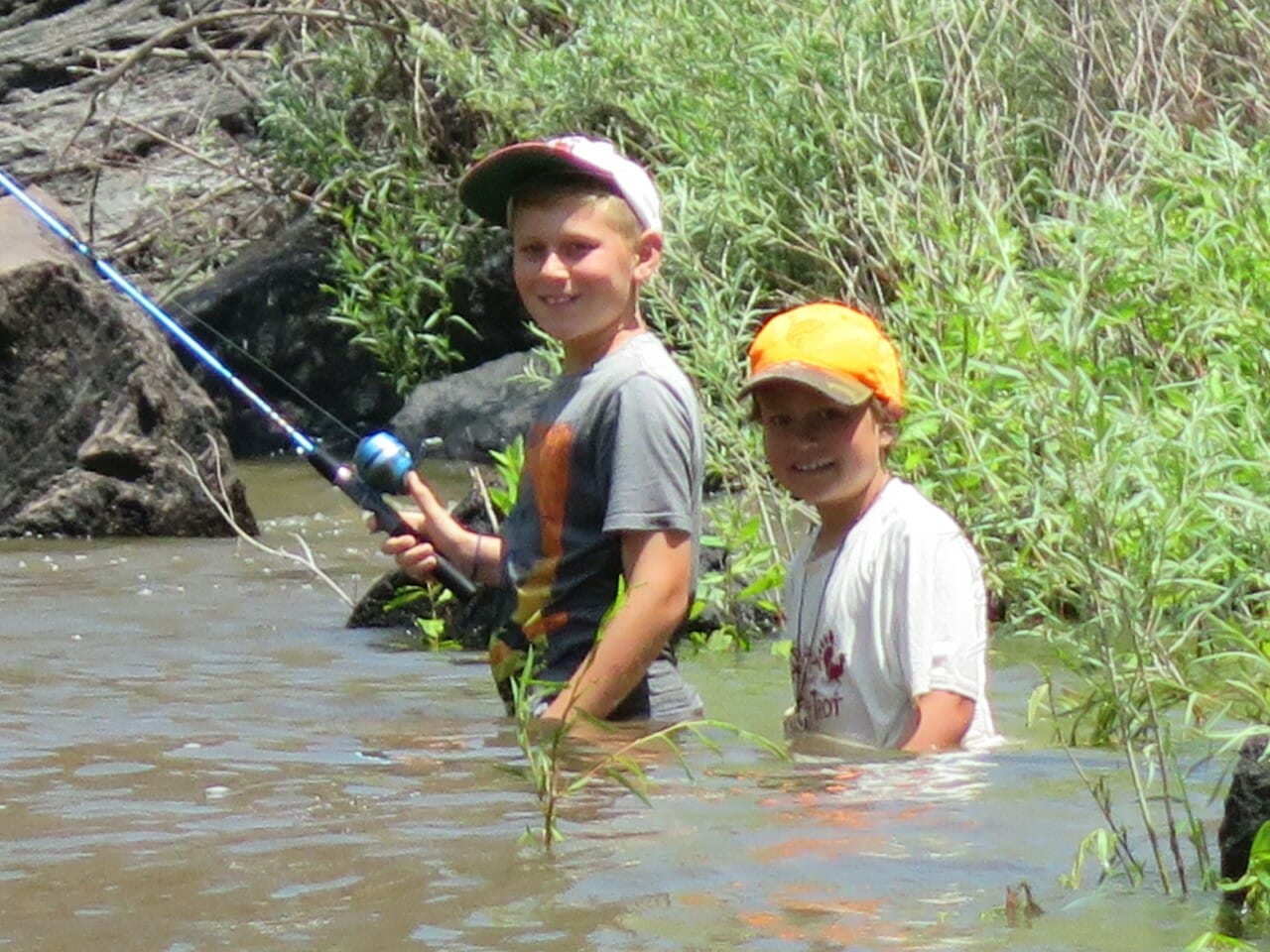A couple summers ago, I was fishing Eagle Rock Lake near Questa with a bubble and fly rig on a spinning rod, and was doing well enough to attract the attention of several nearby children who were having a tough go. Eventually they asked me what I was doing, and I showed them. We took turns with my rod for about an hour, until everyone who wanted to catch a fish had done so. Posing for a picture with a fish in her fists, one little girl begged her mom to cook it for dinner.
“I’m afraid we can’t do that?” the mother responded. “Our hotel room has no stove.”
Many Eagle Rock anglers are Red River vacationers escaping the heat of Texas and Oklahoma. They want a week of easy, staying at hotels and eating at family restaurants, fishing for trout they don’t have to cook. When fishing with the family, it’s often easiest to set the kids up with bobbers and bait, a method generally incompatible with the vacation ideal of not keeping (killing) fish. Of course many fish caught under these circumstances are released to the lake bottom.
Seriously, what are bait fishers to do? When they blow through their limits within a couple hours of starting, do they knowingly release their fish to certain death? It’s embarrassing to realize that I’d never fully considered these questions.
I’ve been geeking out to some videos made by a bait company that — fun trivia — sells more jars of salmon eggs in New Mexico than in any other state. I’ve been impressed by the extent to which catch and release is practiced, and responsibly, among some bait aficionados. On lakes and streams big and small, these anglers have developed a variety of methods for detecting strikes quickly and lip-hooking tons of fish.

Maybe this is old news for some, but the experts seem to have moved away from the standard method of sending a weighted rig to the bottom, establishing tension, and waiting for a strong thud signifying that a fish has gulped the bait. Suspended eggs, worms and hoppers between a float and small weight is all the rage now, and deadly sensitive. Or maybe these guys are just good.
At the mere touch of a fish, the float goes down, and the angler sets the hook before the fish has a chance to swallow. On a lake, softly jigging the bait brings solid strikes. On a stream, this float method is what we fly fishermen call “indicator fishing,” and if I’d known about it when I was a kid, I might never have gotten off the bait fishing.
To catch more fish — and to reduce damage to them — the bait experts also use smaller hooks and baits than would seem logical for the size of the fish they’re after and the scale of the fisheries; steelhead on broad Great Lakes rivers for example. When I think of all the trico-fattened porkies we catch in the fly fishing universe, I realize that our differences are not so great. Explaining their favorite brines and egg colors, these guys get as excited and superstitious as we do about things like body thickness, dubbing shades, or tippet diameter.
When it comes to fishing voodoo, it appears the options are varied.

The ways bait fishers sometimes rough up fish they’re about to release can be difficult to swallow. Salmonids, in the view of some, seem less like aquatic animals than sacks of potatoes. I wince at the gill grabs, bank drags, and the dry-handed hero shots while the fishes’ gasps for air grow weaker and farther between. Within all that, I nevertheless see a drive to minimize fish impacts, an acknowledgement of the angler’s responsibility for the quality of future fishing. These guys are nuts for catching trout on bait. They’ll travel the world for it, and they’re putting fish back.
There are differences, yes, but the passion is the same. It’s in the anglers’ red cheeks, the steam that blows out their mouths when they laugh. Through the short videos, you can feel how painfully cold it is, yet they are ecstatic to be outdoors chasing trout. Sound familiar?
Toner Mitchell is TU’s water and habitat coordinator in New Mexico.



